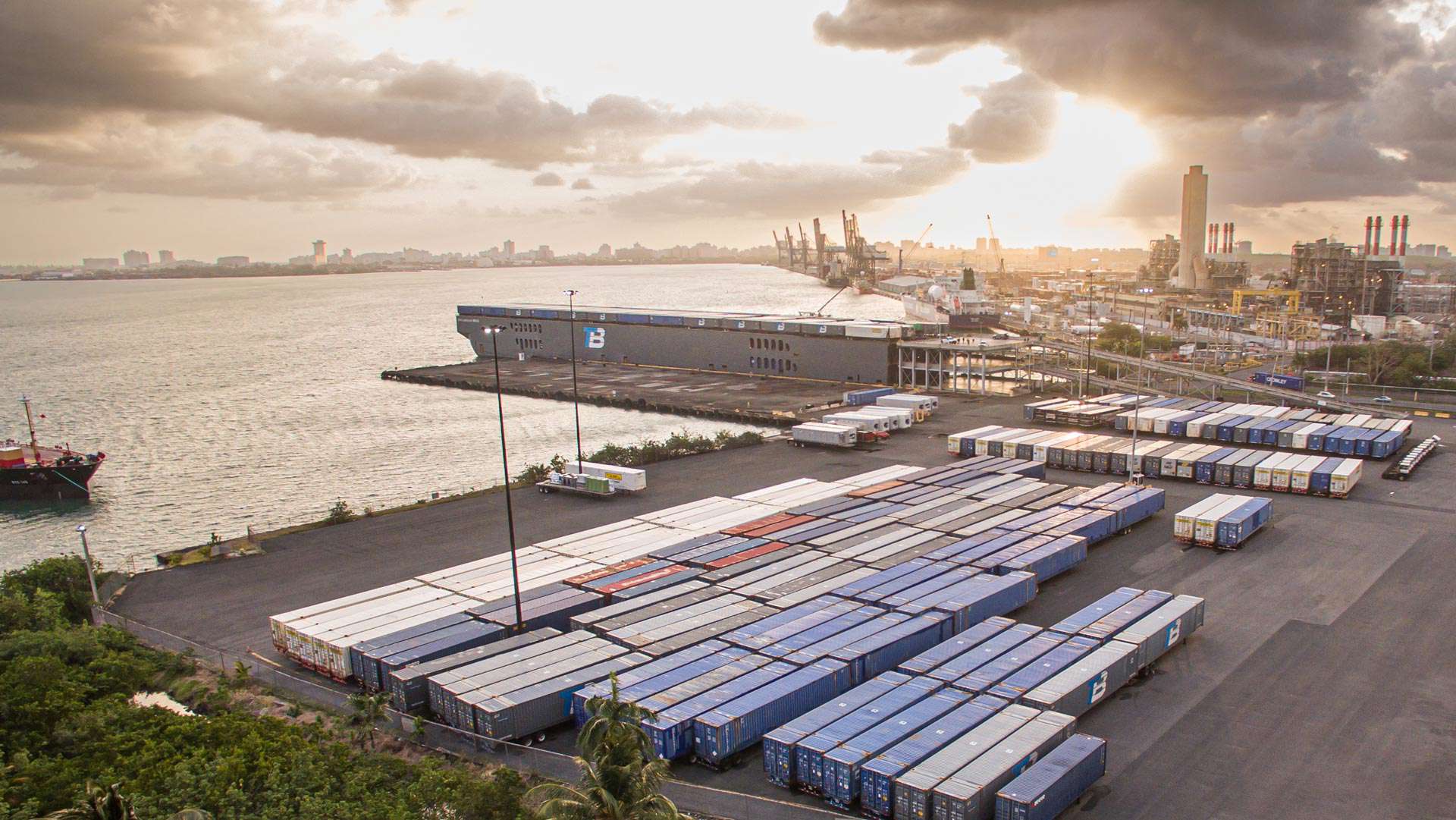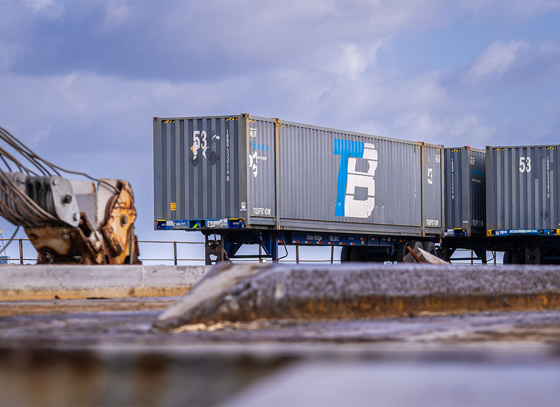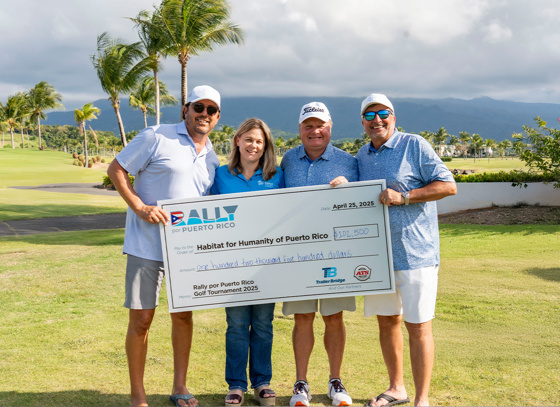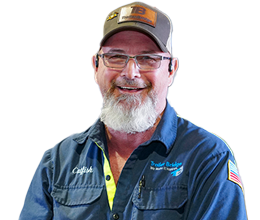
Like Clockwork: Trailer Bridge Keeps Jacksonville–San Juan Shipping Lanes Afloat
When Hurricane Maria ripped across Puerto Rico in September 2017, 150-mph winds knocked out the grid, crippled communications and shuttered port cranes. Within days, a Trailer Bridge (TB) barge eased into San Juan with essential cargo — water, generators, food and bucket trucks — and kept supplies coming for months.
“We had 100 containers of water on one barge, 200 to 300 large generators and weeks where 50 to 60 bucket trucks rolled ashore,” recalled Jacob Wegrzyn, vice president for the Caribbean at TB.
That readiness is not an exception. It’s the operational cadence TB has sustained for more than three decades on the Jacksonville–San Juan lane, a twice-weekly rhythm built on barge flexibility, port partnerships and a culture that treats Puerto Rico like family. “Service and reliability. That’s our promise,” said Tony Kvasnicka, president of TB Ocean.
A Dedicated Lane Ensures Business as Usual
Jacksonville is the No. 1 U.S. port for trade with Puerto Rico, handling nearly 90 percent of all sea trade between the island and the U.S. mainland. Typically, about 77 percent of Continental U.S./Puerto Rico containerized cargo moves through Jacksonville, or 39 percent of the port’s total container throughput. That concentration of flow underpins one of the country’s most strategically reliable trade corridors.
In 2021, the Puerto Rico Ports Authority (PRPA) and Jacksonville Port Authority (JAXPORT) signed a 10-year memorandum of understanding (MOU) to “protect and grow maritime trade” between San Juan and Jacksonville, share best practices and support each other in seeking federal funding. The MOU also recognizes the cities’ “International Sister Cities” ties.
“Jacksonville and San Juan are each other’s largest maritime trading partners,” said JAXPORT’s director of cargo sales, Alberto Cabrera. “With so much cargo passing between ports, we’ve never had Trailer Bridge waiting to berth. When they arrive, they work.”
Partnership in Action: One Message, Two Ports
In recent years, JAXPORT and PRPA have tightened collaboration through biannual working sessions on hurricane readiness, security and best practices, plus joint advocacy trips to Washington, D.C., often with carriers at the table. The shared goal: infrastructure funding that preserves capacity and resilience in the lane.
That unified approach shows up on the ground. In December 2021, TB moved a massive turbine rotor to support Costa Sur’s Unit 6, a 410-MW boost to the grid, during an event attended by Puerto Rico’s former governor and PRPA’s former executive director.
The Jones Act Ensures Reliable Lane Service
The Jacksonville–San Juan trade lane is governed by the Jones Act, Section 27 of the Merchant Marine Act of 1920. In plain terms, vessels moving cargo from one U.S. port to another must be U.S.-built, U.S.-owned and U.S.-crewed. Backed by national security and industrial policy arguments, the Act also delivers stability for U.S. shippers — consistent sailings, equipment standards and predictable rates that don’t fluctuate with global spot markets.
For Puerto Rico, that steadiness is more than a policy point. “Puerto Rico wouldn’t survive if it were at the mercy of international shipping rates,” Kvasnicka said, pointing to pandemic-era ocean spikes that didn’t touch the domestic trade the same way. ”When a shipping container goes from $900 to move it from China to Puerto Rico to over $30,000 because there's an international crisis going on, that’s a hardship. The Jones Act ensures that the shipping rates in this lane remain relatively flat under any circumstance.”
A 35-Year Rhythm Settles Mid-Week Matters
TB sails from Jacksonville on Wednesdays and Fridays, so cargo is available in San Juan on Tuesday and Thursday. That mid-week availability is not a trivial detail. It’s a warehouse and labor planning edge for large importers who otherwise face “Friday/Monday” surges from ship arrivals. “Blend volumes across Friday, Monday, Tuesday and Thursday, and you cut demurrage risk and staffing spikes,” Wegrzyn said.
The barge model also cushions operational shocks. “If a ship breaks down, you can be down for weeks. With a tug-and-barge, if we run into issues, we swap tugs and keep on sailing,” Kvasnicka said.
“We’re the only carrier designed to offload a LOLO barge with reach stackers instead of relying on cranes,” Kvasnicka said. “If cranes are locked down or damaged, we can still work.”
Full Service, Not Just Port-to-Port
TB positions itself as a full service partner for shippers. “We manage the whole experience of getting equipment to the customer, including transload and intermodal,” Wegrzyn said. “As well, our 53-foot domestic equipment moves seamlessly to ocean, avoiding costly reconfigurations into 40-foot boxes.”
That model is anchored by an in-house service culture. As a boutique carrier, TB remains nimble and responsive to customer needs. Indeed, their smaller size and intentional focus on building face-to-face customer relationships is what sets them apart.
“We don’t outsource account management or tracking. We treat our customers and employees like family,” Kvasnicka said. “If an account manager has a question, they walk to the next team and get the answer. This direct line of communication is extended to our customers.”
Customers notice. In TB’s 2025 Mid-Year Customer Survey, 98 percent of respondents reported being satisfied and 87 percent rated TB’s communication as exceptional; service and dependability were top reasons to stay.
The external recognition matches the internal numbers. Logistics Management readers named TB the top Ocean Carrier in its 2024 Quest for Quality Awards, with high marks for on-time performance and IT.
Oversized, Over-Height, Over-Wide and Still on Time
Puerto Rico’s rebuild and growth programs run on heavy steel. That means transformers, cranes, diggers, turbines, EVs and racks of solar panels. “Some pieces hit 200,000 pounds. You won’t fit those on a ship in this trade lane,” Kvasnicka said. “We’ll reinforce a deck section if we need to. We find a way to get it done for our customers.”
TB’s weekly yard view underscores the point: “I’ve never seen so many transformers staged for Puerto Rico,” Cabrera said after a recent terminal visit, describing sustained energy equipment demand tied to grid upgrades.
The oversized cargo arrives at port on its specialized equipment and is loaded directly onto the barge. This direct transfer from over-the-road to ocean transport creates ease of flow and adds a layer of protection for shippers with less touch points, minimizing opportunities for damages.
Investments That Keep the Lane Flowing
PRPA and partners recently announced an $85.3 million project to replace and modernize the Army Terminal finger pier in San Juan where TB operates. When complete, the work will boost efficiency by consolidating LOLO and RORO operations at one terminal. Wegrzyn said the project is moving through design and permitting with the Army Corps of Engineers, with bids expected in early Q1, 2026 and teardown to follow.
TB also plans an extensive $9–$10 million investment in its assets in 2026, part of a multi-year asset program that also rotates 53-foot equipment and chassis every two-to-three years.
In 2025, TB installed real-time trackers fleetwide on 53-foot boxes, a roughly $900,000 investment aimed at proactive exception management and customer communications. Furthermore, in 2022 JAXPORT approved a long-term, $62 million agreement that keeps TB at Blount Island through at least 2041, mirroring the company’s lease with PRPA, an alignment that gives shippers planning certainty.
Chelsea Kavanagh, JAXPORT’s chief communications officer, said “Those aligned leases will help ensure our continuity of service for 20-plus years.”
Manufacturing’s Comeback and Why Timing is Everything
Puerto Rico’s manufacturing base, once dense with pharma and medical device plants, thinned over the past 15 years, but momentum is shifting. Amgen recently announced a $650 million expansion of its Juncos biologics campus, with roughly 750 new jobs, signaling renewed confidence in the island’s production ecosystem.
Just last March, private sector leaders and government representatives met to discuss reshoring strategies to position Puerto Rico as a key player in the U.S. industrial sector. During the meeting, Governor Jenniffer González-Colón signed an executive order “formalizing the efforts to establish the island as a key destination for production and export within the United States.”
The order also includes a centralized point-of-contact to streamline investments, a workforce training fund and fast-track permitting to prioritize strategic projects.
For high-value exporters, the lane’s cadence is a competitive asset. “Northbound pharma and devices rely on two weekly sailings, sub-one-week transit and predictable handling,” Wegrzyn said. “The international model of multi-stop loops just isn’t acceptable for those supply chains.”
TB’s role extends beyond ocean. The company supports inland intermodal moves, coordinating door-to-port routings that compress lead times for time-sensitive SKUs.
Why it Matters to Shippers
For supply chain leaders, the value proposition reads like a risk-reduction checklist:
- Stable rates and capacity insulated from global spot volatility under the Jones Act
- Predictable inventory cycles aided by mid-week availability and proactive demurrage alerts
- Door-to-door control with one accountable team and end-to-end visibility
- Project-cargo flexibility for oversized energy and construction equipment essential to the island’s rebuild
- Port partnerships codified by a 10-year MOU and matched long-term leases on both ends of the lane
As Cabrera put it, “If Puerto Rico thrives, Jacksonville thrives. We’re in this together.”
Innovation and Experience Make the Difference
For more than 35 years, Trailer Bridge’s north-south beat has matched the pace of everyday life in Puerto Rico: steady, responsive, ready for the next cargo surge or the next storm. The formula is simple but hard to duplicate. Disciplined barge operations, tight port partnerships, continuous investment and people who pick up the phone make Trailer Bridge the carrier of choice in the Caribbean.
“We’re a lifeline tethered to Puerto Rico,” Kvasnicka said. “Our job is to keep it moving every week no matter what.”
Related Articles








